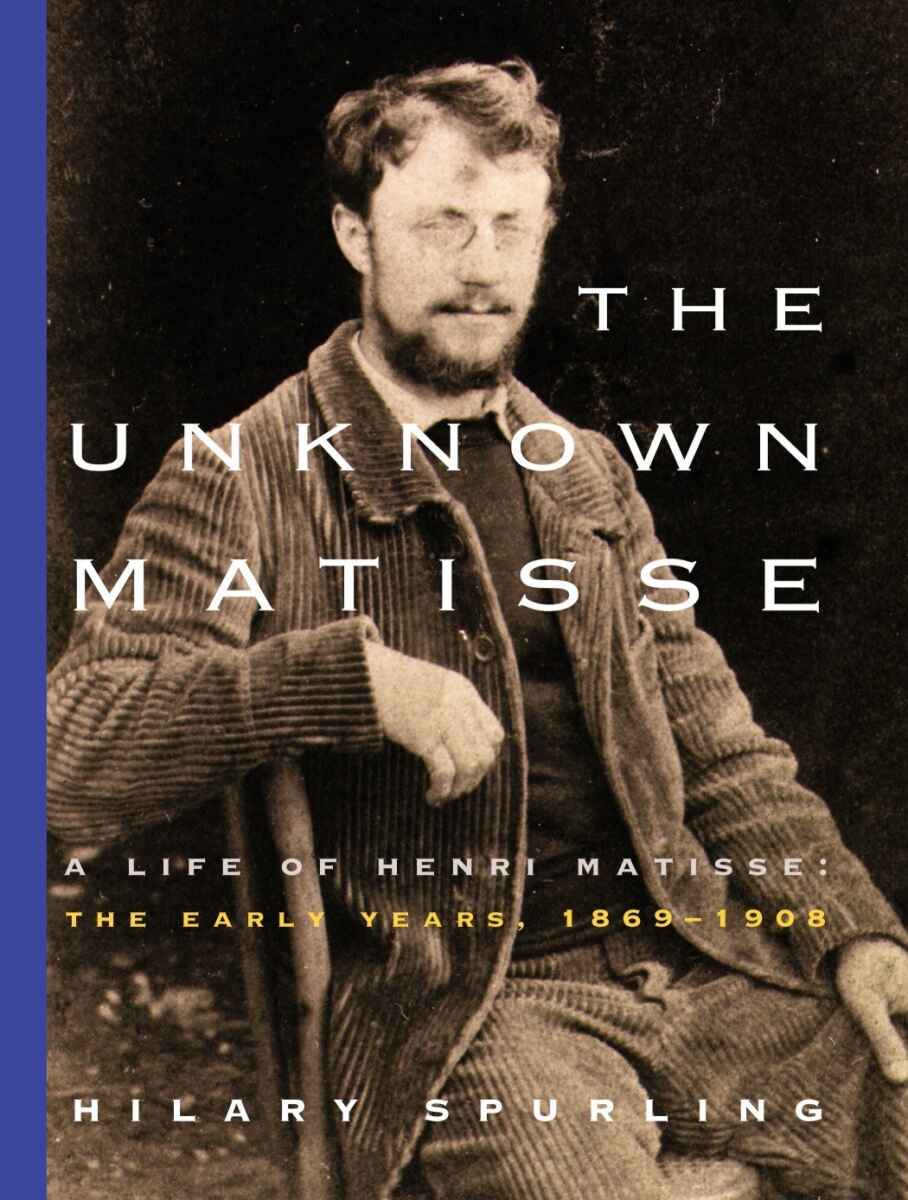
Hilary Spurling is no art historian, but a broadly acclaimed biographer (e.g.: Paul Scott). After eight years of research on the subject, she has published a brilliantly written book about the Henri Matisse (1869-1954)
Hilary Spurling: The Unknown Matisse: A Life of Henri Matisse: the Early Years, 1868-1908, New York, Knopf, 1998, 482 pages. English edition from Amazon.com, Amazon.co.uk, Amazon.fr, Amazon.de (accept cookies to go directly to the book).
Hilary Spurling She explores the life and work of young Matisse up to his recognition in the years 1907-1908 (a second volume on the following years is still to be published). Spurling successfully goes beyond the — sometimes false — anecdotes that were known about Henri. With the help of Matisse’ family, Spurling presents a lot of details about his childhood and in particular about the national financial scandal that ruined his wife’s family, who had been a vital support for the artist.
Henri Matisse was born in 1869 in the French part of Flanders, near the Belgian border. According to Hilary Spurling, he was a typical child of the Picardie: brusque, sober, unromantic, but full of energy and wit. In the drawing lessons at school, he had to copy mecanically geometric objects. Deviation from the established method or using color was immediately punished. Matisse rebelled against it and this might be the reason why he became a great colorist. Another inspiration for the color in his paintings were the weavers of his hometown Bohain.
His father was a seed merchant and Henri was to have become a lawyer. For this reason he went to Paris for a year, fulfilling the middle-class aspirations of his family. Only at 20 did he discover his true calling when he saw Léon Bouvier’s painting Swiss Chalet (1890). He moved again to Paris — but this time to study art. In order to get admitted to the Ecole des Beaux-Arts, he first had to study in one of the multiple Paris art schools. He moved from William Bouguereau to Gabriel Ferrier and then to Gustave Moreau, where he finally got recognition. Matisse was influenced by the paintings of Chardin and Goya. His teacher Moreau was a painter who despised the “art du salon”, so Matisse remained in a certain sense an “outcast” of the art world. He initially failed his drawing exam for admission to the Ecole des Beaux-Arts, but persisted and was finally accepted.
In 1894, Henri Matisse became the father of an illegitimate daughter, conceived in his studio with the mistress of a friend. Matisse acknowledged the child, but his friendship to the other painter ended.
Henri Matisse’s first success as an artist came in 1896 when the Salon de la Société Nationale des Beaux-Arts accepted to show five of his paintings. The state bought one of his works and a critic wrote a positive review about his art. Hilary Spurling notes that this was the first and almost only recognition Matisse got in his native country during his lifetime. In the same year, he advanced to the status of favourite pupil of his teacher Moreau and the state bought another painting. As his paintings were again refused by the Ecole des Beaux-Arts, a frustrated Moreau advised him to go his own way outside the venerable institution.
In the mid-1890s, Matisse found inspiration in the work and the artists’ colony of the Australian-born painter John Peter Russell whose inheritance allowed him to be independent. His light and bright colors affected Matisse strongly. Russell introduced him to impressionism. Matisse also observed Russell’s and other artists’ stable marriages. This probably influenced him to find in Amélie Parayre his anchor. He married her in January 1898, only three months after having been introduced to her. Her family provided the support he needed.
After years in poverty, Henri Matisse went through his “dark period” (1902-03), moved briefly to naturalism, went back to a dark palette and told friends in 1903 that he had lost all desire to paint and had almost decided to give up. His crisis coincided with the downfall of the Humbert family, one of the great financial scandals in France. Matisse’ parents-in-law were employed by the Humbert’s and the naïve and innocent Parayres paid the price for that. The Humberts fled, taking the pension funds of a bank run by the Parayre family who lost their savings, home and honor. Matisse’s father-in-law ended up in jail for several months and his wife was forced to close her hat shop.
Henri Matisse assisted his wife’s family in court and at the same time overcame his artistic crisis. He stopped the search for “objectivity” in painting and instead found his conscious subjectivity. He experimented with light and color. His star started rising and, by early 1908, the Paris art world was divided in supporters of Picasso and of …. Matisse. Let’s hope volume two of this well-written biography will soon be available.
Hilary Spurling: The Unknown Matisse: A Life of Henri Matisse: the Early Years, 1868-1908, New York, Knopf, 1998, 482 pages. Order the original English edition from Amazon.com, Amazon.co.uk, Amazon.fr, Amazon.de (accept cookies to go directly to the book).

For a better reading, quotations and partial quotations in this book review have not been put between quotation marks.
This book review was originally added to our pages in January 1, 2000. Book review added again (to our newly designed pages) on November 12, 2023 at 13:10 Swiss time. Originally, the article contained two reviews. The one about John Russell’s book Matisse: Father & Son has now been published in a separate article.